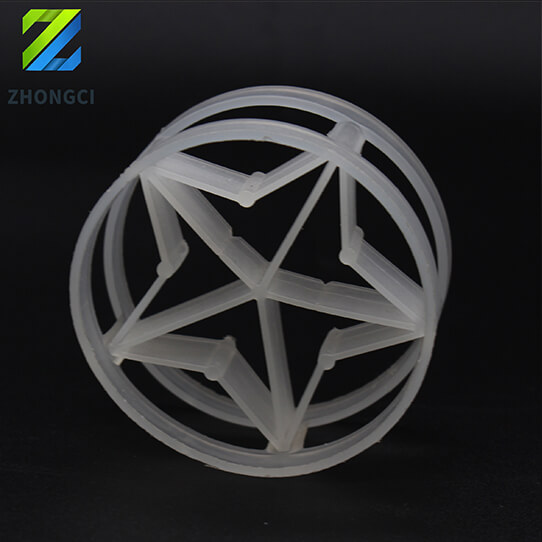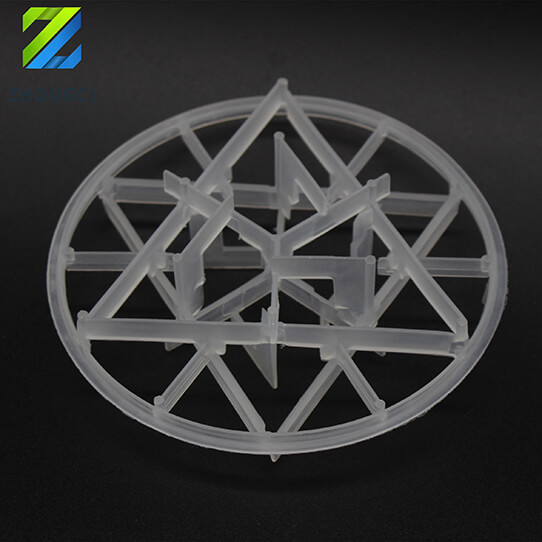Exhibition
Unlock Higher Cooling Efficiency with the Right Fill Design
Cooling Tower F …
Cooling Tower Fill Media — Complete Explanation and Use Cases
Cooling tower f …
How to Choose the Right Perforated Ceramic Ball
Perforated cera …
Plastic Tri-Pack
Features of plastic tri-pack
• High mass transfer efficiency.
• Evenly gas and liquid distribution.
• High surface area.
• Extremely low pressure drop.
• Temperature and chemical resistance.

360° shows of plastic tri-pack for comprehensive understanding.
Plastic tri-pack is a type of random tower packing, which has hollow, spherical structure. Plastic tri-pack has a symmetrical geometry, which is made from a unique network of ribs, struts and drip rods. It is made of injection molded plastic, including PP, PE, PVC, PVDF and other materials. The most widely used diameter of plastic tri-pack is 1″, 1-1/4″, 3″ and 3-1/2″.
Available materials
Polypropylene (PP).
Polyethylene (PE).
Polyvinyl chloride (PVC).
Chlorinate polyvinyl chloride (CPVC).
Polyvinylidene Fluoride (PVDF).
Reinforced Polypropylene (RPP).

Sectional view of plastic tri-pack.

Side view of plastic tri-pack.
Plastic tri-pack has a hollow spherical structure with several ribs and struts.
Plastic tri-pack can be customized into any size according to customers’ requirements.
Item | Size | Surface Area | Voidage | Bulk Number | Bulk Density | Dry Packing Factor |
PTPR-01 | 25 | 85 | 90% | 77000 | 81 | 28 |
PTPR-02 | 32 | 70 | 92% | 25000 | 70 | 25 |
PTPR-03 | 50 | 48 | 93% | 10500 | 62 | 16 |
PTPR-04 | 95 | 38 | 95% | 1800 | 45 | 12 |
Table 2: Physical & Chemical Properties of Different Materials of Plastic Tri-Pack | ||||
Material/Performance | Density | Operation Temperature | Chemical Corrosion Resistance | Compression Strength |
PE | 0.98 | 90 | good | >6.0 |
PP | 0.96 | >100 | good | >6.0 |
RPP | 1.2 | >120 | good | >6.0 |
PVC | 1.7 | >60 | good | >6.0 |
CPVC | 1.8 | >90 | good | >6.0 |
PVDF | 1.8 | >150 | good | >6.0 |
Applications of plastic tri-pack
• Gas absorption and purification.
• Gas & liquid separation.
• Liquid extraction.
• Water treatment.
• Biological filtration.











